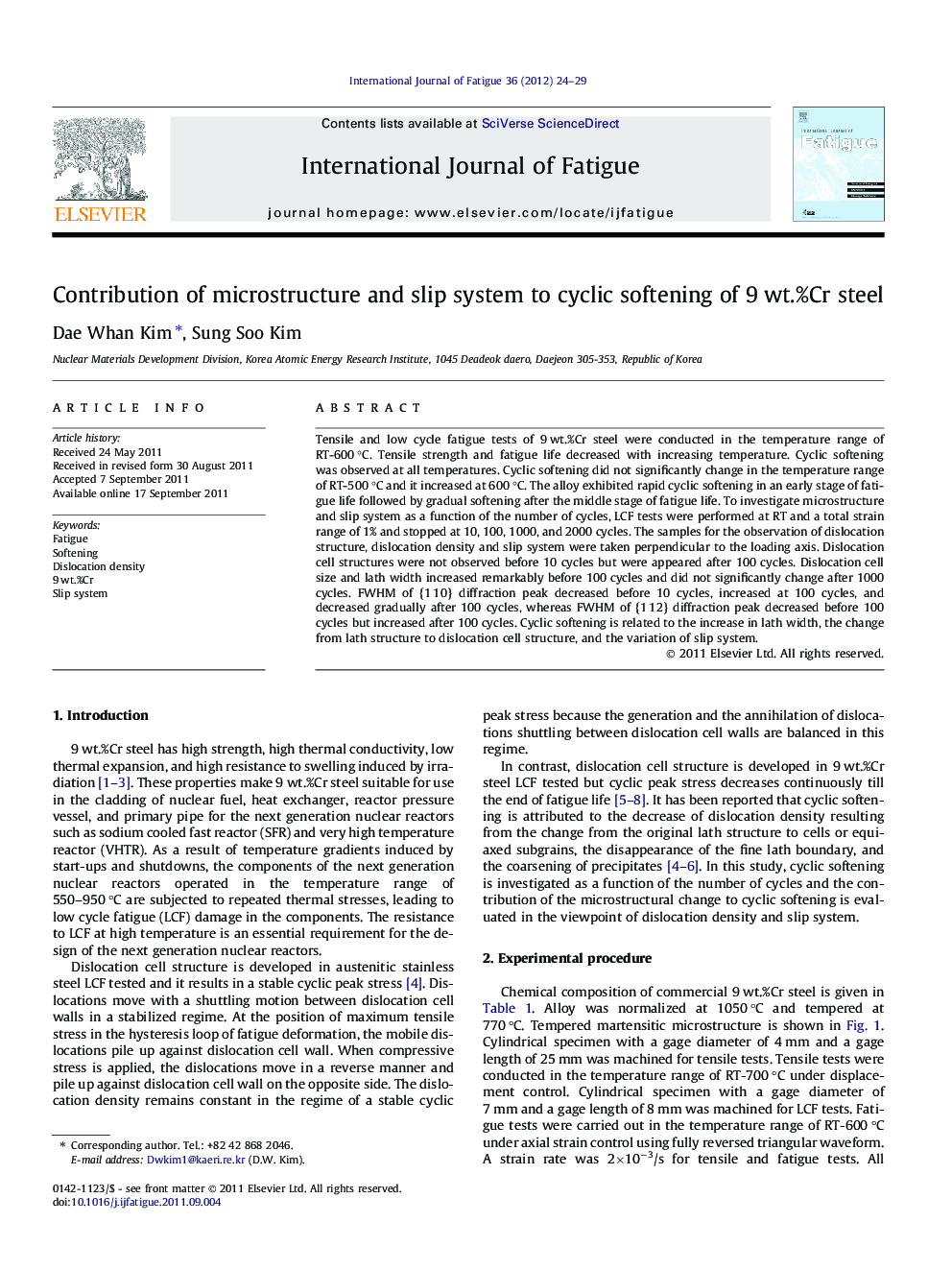| Article ID | Journal | Published Year | Pages | File Type |
|---|---|---|---|---|
| 781122 | International Journal of Fatigue | 2012 | 6 Pages |
Tensile and low cycle fatigue tests of 9 wt.%Cr steel were conducted in the temperature range of RT-600 °C. Tensile strength and fatigue life decreased with increasing temperature. Cyclic softening was observed at all temperatures. Cyclic softening did not significantly change in the temperature range of RT-500 °C and it increased at 600 °C. The alloy exhibited rapid cyclic softening in an early stage of fatigue life followed by gradual softening after the middle stage of fatigue life. To investigate microstructure and slip system as a function of the number of cycles, LCF tests were performed at RT and a total strain range of 1% and stopped at 10, 100, 1000, and 2000 cycles. The samples for the observation of dislocation structure, dislocation density and slip system were taken perpendicular to the loading axis. Dislocation cell structures were not observed before 10 cycles but were appeared after 100 cycles. Dislocation cell size and lath width increased remarkably before 100 cycles and did not significantly change after 1000 cycles. FWHM of {1 1 0} diffraction peak decreased before 10 cycles, increased at 100 cycles, and decreased gradually after 100 cycles, whereas FWHM of {1 1 2} diffraction peak decreased before 100 cycles but increased after 100 cycles. Cyclic softening is related to the increase in lath width, the change from lath structure to dislocation cell structure, and the variation of slip system.
► Cyclic softening of 9 wt.%Cr was observed during low cycle fatigue. ► Cyclic softening is investigated as a function of the number of cycles. ► Contribution of dislocation density and slip system to cyclic softening is evaluated.
